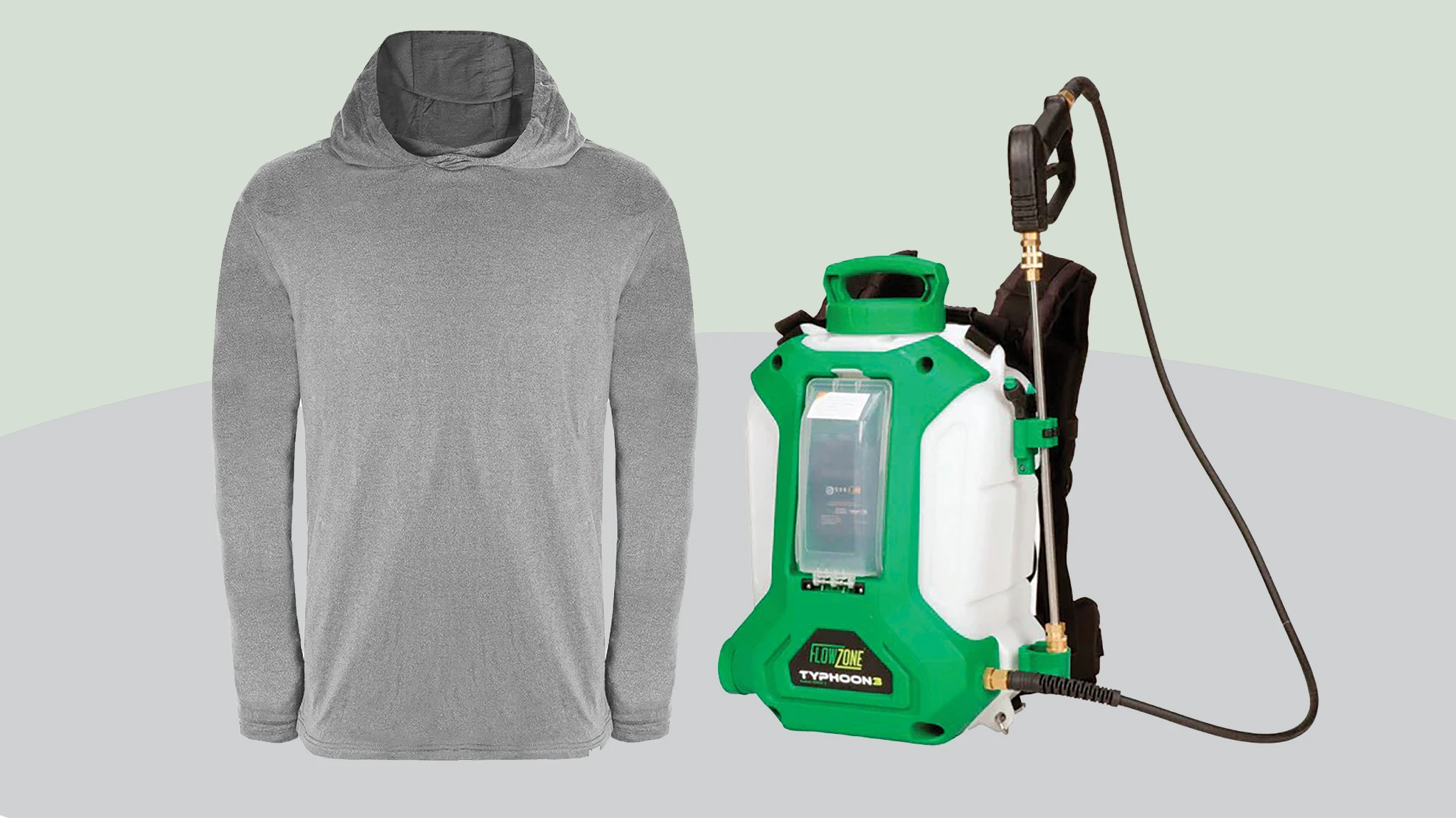Twospotted spider mites have voracious appetites. But what makes these tiny pests’ feeding habits such a problem?
{sidebar id=66}
The trouble lies in how they feed and the extensive damage they do. While living mostly on the undersides of leaves, spider mites feed by sticking their pointed mouth parts into plant cells, then sucking out the contents. They feed on cells that contain chlorophyll. When the chlorophyll content is reduced, plants can’t photosynthesize as well. Removal of this chlorophyll gives the tops of the leaves white speckles and discoloration. As feeding continues, leaves can turn yellow or bronzed or they may drop completely from plants.
Organic control
Organic controls for them can be broken into two categories: spray pesticides and biological controls. Several miticide sprays are approved for use on organics crops. These products’ packaging will often include the “OMRI listed” (Organic Materials Review Institute) logo. Some of the products you’re likely already using carry this logo -- Triact 70, M-Pede, Organicide and JMS Stylet-Oil (there are both conventional and organic-approved versions of this product).
Others you might not have heard of include GC-Mite, Hexacide and PyGanic EC.
As with any pesticide, you should always read the label and make sure it is registered for use with your application. Keep in mind that even though they are OMRI listed, they are still pesticides. Always follow the safety requirements and a rotation schedule.
There are several options with biological controls. The most popular are the predatory mites Phytoseiulus persimilis and Neoseiulus californicus.
These mites are widely available from insectaries in
One common misconception is that if you use biological controls, you have to stop spraying pesticides. This is not true. Almost all biological-control programs incorporate some pesticides. One of the many benefits of biocontrols is that you spray less, so pesticides are more effective when you need them. Insects can’t build resistance to pesticides if they’re not used on them constantly.
If you haven’t thought about incorporating biological controls into your twospotted spider mite program, now is the time.
Conventional miticides
There are many miticides on the market. To choose one, take a look at their characteristics and see which ones fit your needs. The first questions should be: Can this product be applied on my site? Is it for nursery, greenhouse or landscape use?
Next, find out what mite populations it works best on. This is why scouting and understanding your pest are so important.
Some products, like TetraSan 5 WDG, work best applied on low mite populations. If your mite populations are high, a quick knockdown is needed and this product wouldn’t work.
Akari 5SC or a horticultural oil would be a much better choice since they can knock back high populations. An added benefit to using the oils is resistance can’t be built, so you don’t have to worry about rotation. On the downside, growers have to be careful how the oils are applied so that foliage won’t be damaged or burned.
How should miticides be applied? Most can be classified in to two ways: contact kill or translaminar.
With contact miticides, you must have thorough coverage of the mites on the bottom sides of leaves. This can be tricky. Translaminar products can fall on the leaf surface and move down thought the leaf profile to the bottom of the leaf where the mites live and feed.
But translaminar products should not be confused with systemic products. Systemics don’t always work well on twospotted spider mites. Systemic insecticides normally move through plants’ vascular tissues -- either xylem or phloem. Twospotted spider mites do not feed on these specific tissues, thus never ingest most systemics.
Biocontrol startup
If you’re going to start a predatory mite program to control twospotteds, you’ll need to start backing off products extremely toxic to the beneficials. Doing this will keep your plants from being too “chemically hot” when the time comes to release the good mites.
Talstar is a classic example. After applying Talstar, the recommended wait time before releasing beneficials is two months.
Many miticides are compatible with the good guys but, unfortunately, this information is not usually found on the label. Two excellent Web sites to get this information from are www.biobest.ca and www.koppert.com.
BioBest Canada Ltd., (519) 322-2178, www.biobest.be.
Koppert Biological Systems, (734) 641-3763, www.koppertonline.com.
Sterling Insectary, (661) 725-1832, www.sterlinginsectary.com.
Syngenta Bioline, (805) 986- 8265; www.syngentabioline.com.
{sidebar id=2}
- Suzanne Wainwright-Evans
Latest from Greenhouse Management
- The Growth Industry Episode 3: Across the Pond with Neville Stein
- A nation of gardeners: A history of the British horticulture industry
- How Izel Native Plants is solving the native plant conundrum
- Trends: Proven Winners 2025 perennial survey shows strong demand
- Online registration opens for 2025 Farwest Show
- Cashing in with customization
- The Ball Seed Difference
- Lawsuit challenges new H-2 visa rules





